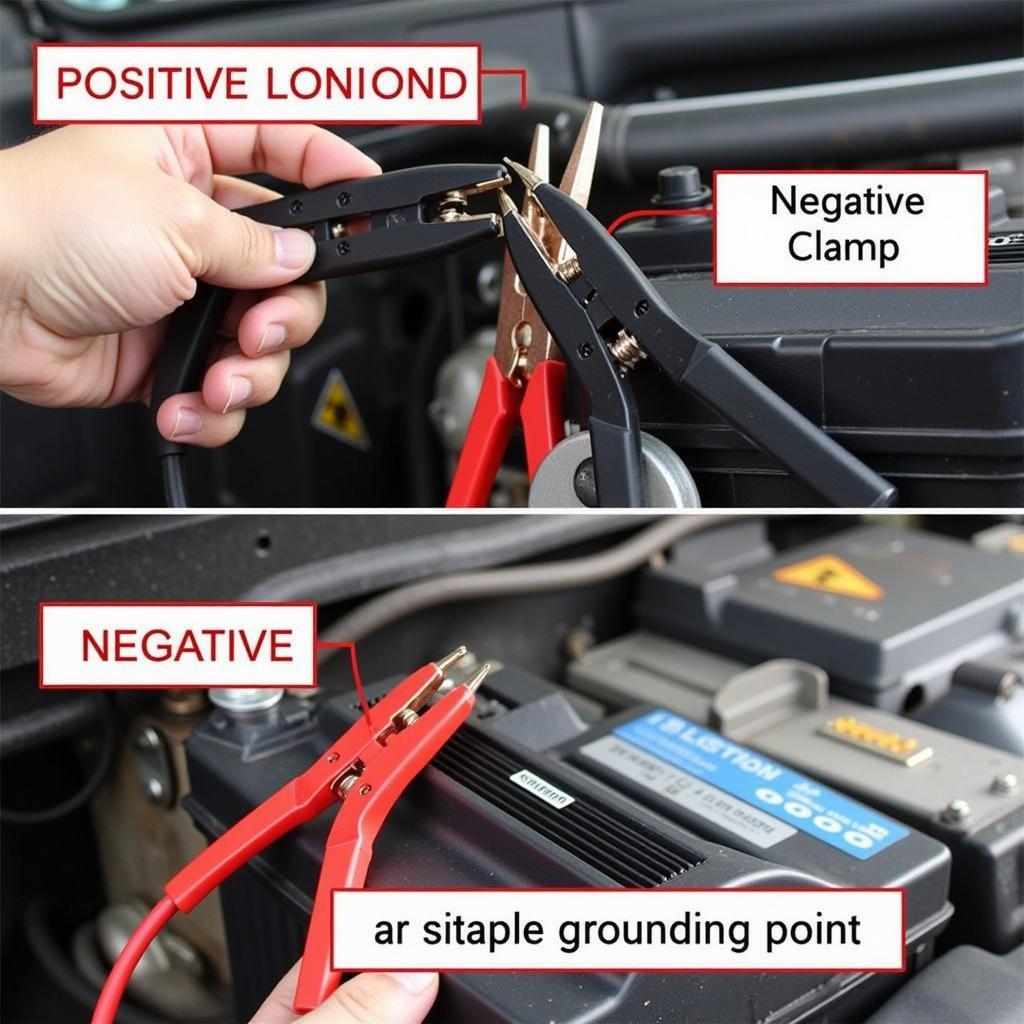Maintaining a car battery can be a hassle, but no maintenance batteries offer a convenient alternative. These sealed units require no topping off with water and are designed for a long lifespan. Understanding how to charge them correctly is vital for optimal performance and longevity.
Similar to car maintenance sacramento, proper battery care is essential for any vehicle. This article dives into the world of charging no maintenance car batteries, covering everything from choosing the right charger to troubleshooting common problems. We’ll explore best practices and provide expert advice to ensure you’re getting the most out of your battery.
Understanding No Maintenance Car Batteries
No maintenance, or sealed, batteries are designed for convenience and longevity. They utilize advanced technologies like Absorbent Glass Mat (AGM) or gel cell construction to eliminate the need for water refills. This sealed design prevents spills and corrosion, making them ideal for modern vehicles with complex electrical systems. However, understanding their charging requirements is crucial.
What are the advantages of using a no maintenance car battery? These batteries are spill-proof, require no water additions, and typically last longer than traditional batteries. They’re also more resistant to vibrations, making them suitable for off-road driving conditions.
Choosing the Right Charger for Your No Maintenance Battery
Selecting the correct charger is essential for effectively charging a no maintenance car battery. Using an incompatible charger can lead to overcharging, damaging the battery and potentially shortening its lifespan. Opt for a “smart” charger specifically designed for AGM or gel cell batteries. These chargers automatically adjust the charging voltage and current, preventing overcharging and maximizing battery life.
How do I know if my charger is compatible? Look for chargers labeled as “AGM compatible” or “gel cell compatible.” Avoid using traditional trickle chargers, as these can overcharge sealed batteries.
Step-by-Step Guide to Charging Your Battery
Charging a no maintenance battery is a straightforward process when using the correct equipment and procedures. Follow these steps to ensure a safe and effective charge:
- Safety First: Wear safety glasses and gloves to protect yourself from potential hazards.
- Preparation: Ensure the vehicle is turned off and parked in a well-ventilated area.
- Connect the Charger: Connect the positive (red) clamp to the positive terminal of the battery and the negative (black) clamp to a clean, unpainted metal surface on the vehicle chassis, away from the battery.
- Turn on the Charger: Follow the manufacturer’s instructions for your specific charger. Smart chargers typically begin charging automatically.
- Monitor the Charging Process: Observe the charger’s indicator lights or digital display to monitor the charging progress.
- Disconnect the Charger: Once the charger indicates a full charge, disconnect the negative clamp first, followed by the positive clamp.
Why is it important to disconnect the negative clamp first? Disconnecting the negative clamp first minimizes the risk of sparking and potential damage to the vehicle’s electrical system.
 Connecting Charger Clamps to No Maintenance Battery
Connecting Charger Clamps to No Maintenance Battery
Troubleshooting Common Charging Issues
Even with proper care, you may encounter charging issues. Here are some common problems and solutions:
- Battery Won’t Hold a Charge: This could indicate a faulty battery or a parasitic drain on the electrical system. Consider having the battery tested and the electrical system checked by a qualified technician.
- Charger Not Working: Ensure the charger is plugged in correctly and the power outlet is functioning. Check the charger’s fuses and wiring for any damage.
- Slow Charging: This can be caused by a low-capacity charger or a battery that is nearing the end of its lifespan. Consider upgrading to a higher-amp charger or replacing the battery.
Similar to maintenance costs cut on electric cars, no maintenance batteries offer long-term cost savings by reducing the need for regular maintenance. However, understanding their charging requirements is key.
 Troubleshooting Car Battery Charging Problems
Troubleshooting Car Battery Charging Problems
Extending the Life of Your No Maintenance Battery
Proper charging practices are essential for maximizing the lifespan of your no maintenance battery. Here are some tips to extend its longevity:
- Avoid deep discharges: Try not to let your battery discharge completely.
- Keep the battery clean: Regularly inspect the battery terminals and clean any corrosion.
- Store the battery properly: If storing the battery for an extended period, disconnect it from the vehicle and store it in a cool, dry place.
Just like using a play store car maintenance log, regularly charging your no maintenance battery is crucial. Consistent charging helps maintain the battery’s health and ensures it’s ready to power your vehicle when needed.
Conclusion
Charging a no maintenance car battery is a crucial aspect of vehicle ownership. By following the correct procedures and understanding the specific needs of these batteries, you can ensure optimal performance and extend their lifespan. Remember to always prioritize safety and consult your vehicle’s owner’s manual for specific recommendations. For further assistance or personalized advice, contact AutoTipPro at +1 (641) 206-8880 or visit our office at 500 N St Mary’s St, San Antonio, TX 78205, United States.
Similar to understanding car maintenance light symbols, knowing how to charge your no maintenance battery empowers you to take proactive steps in maintaining your vehicle’s health.
 Fully Charged No Maintenance Car Battery
Fully Charged No Maintenance Car Battery
FAQ:
- How often should I charge my no maintenance car battery?
- Can I use any car battery charger for a no maintenance battery?
- What are the signs of a failing no maintenance battery?
- How long does it take to fully charge a no maintenance battery?
- What should I do if my no maintenance battery is leaking?
- How do I dispose of a no maintenance car battery?
- What are the differences between AGM and gel cell batteries?







Leave a Reply